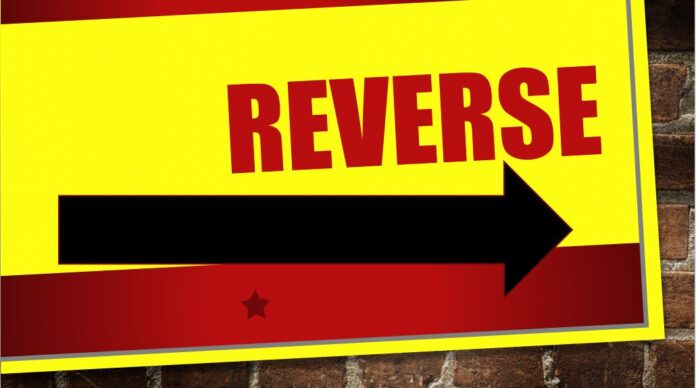A case for Skating in the REVERSE Direction
When was the last time you skated in the Reverse Direction in a roller skating rink? I’m hopeful your local rink does this at least once an hour, if not once per session. But lately, I haven’t seen it that often. Maybe I don’t stay long enough (like all day) to skate in the opposite direction. However, RSIs, or repetitive stress injuries are real, and skating only in one direction may lead to that. Especially as we age.
All Skate vs. Reverse Skate
First off, let’s explain. The “regular” skating direction in a roller rink is counter-clockwise. The “reverse” direction is clockwise. The regular direction, also known as “All Skate” was designed for people who are dominate using their right hand. You can tell those who are left-handed when you’re watching professional skating competitions, where all their tricks (spins and jumps) are performed clockwise. Right-handed skaters rotate counter-clockwise. These folks, myself included, feel quite comfortable skating in the regular direction.
Why it Matters
When I first came back to skating in my late 30s after a 20-year break, my coach quickly noticed I could only turn in one direction, which was counter-clockwise. I found it difficult to go the other way and at the time, really didn’t care. But because I was paying money to become a better skater, I listened and practiced, and I not only improved, I became a far safer skater. Except I rarely got to practice backwards cross-pulls in the reverse direction, or cross-overs (left foot over right) for that matter.
After two decades I ended up with a sore right hip and a strained inner groin muscle, either caused by a badly mounted skate, or from always turning left. Probably both. My physical therapist said I needed to skate the opposite direction more often, or just give it up. My local rink owner told me her husband had once suffered a strained groin muscle, and it took months of being off skates to get it to heal.
How disappointing. I came back to skating because it was low impact and easy on the joints, but no way was I expecting this. And considering the number of rinks I’ve been in and trade shows I’ve attended, no one in the skating industry ever mentioned this. Or promoted skating in both directions. Yes, there are the usual games, of Ghostbusters or Topsy Turvy to build skills, but it’s not enough.
The rink rats are gonna complain, no doubt, but they’ll clear the floor and spend money in the snack bar or game room. Whereas, the serious skaters will remain for a Reverse Skate to build skills. This makes for better, safer skaters, and fewer injuries caused by repetition. Additionally, there are now more left-handed people than there were in previous decades. Maybe we should be considering their preferences as well.
If you’ve ever visited a gym with a walking track, they change the direction every other day. The reason is to keep the nap in the flooring from developing a pattern. While I don’t know if this theory pertains to roller rink floors, the methodology is similar. Walkers leaning in a particular direction on the curves. Only in skating, we cross one leg over the other at every turn. And the weight of the skates adds to the stress. Tiny rinks are even more problematic. I once skated at a Midwestern rink that was shaped like a donut. My right leg never got any rest on a straightaway. Nor did we go the other direction while I was there.
As you get ready to launch your venture into rink ownership, please consider changing the direction for one or two songs often, before your skaters get comfortable only going one way. Make digital sign boards, so everyone knows what’s happening on the floor. You’ll get more mileage from your customers for years to come.
Disclaimer
And note this disclaimer. There is insufficient research on RSIs in roller skating rinks. This article is intended for informational purposes only and merely a suggestion from a long-time recreational rink skater. It may not be used as discovery in litigation against any rink operator since it’s difficult to prove if my injury came from always turning left, or the tech who mounted my skates.


